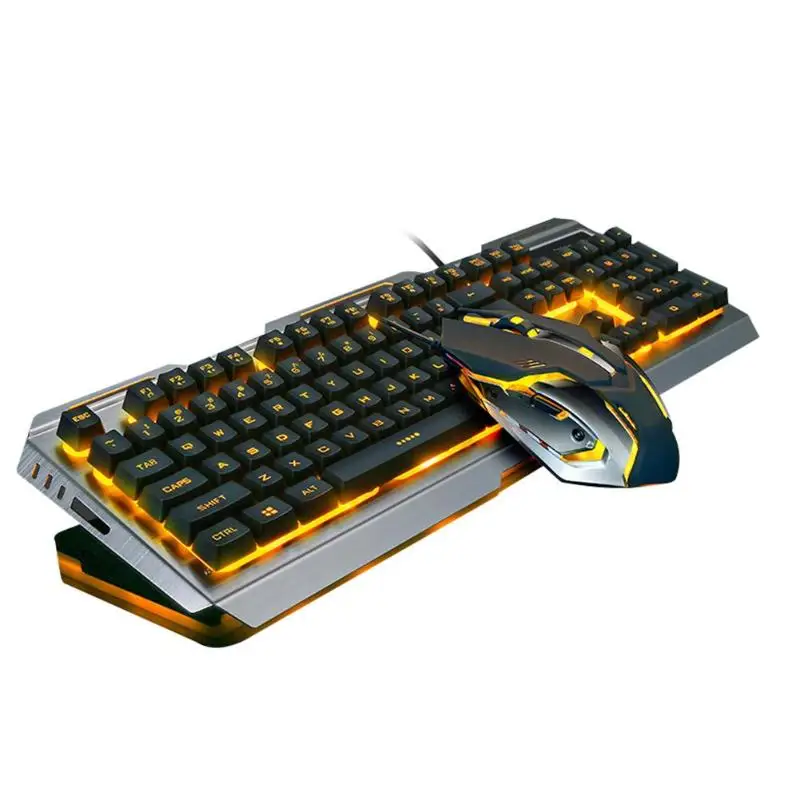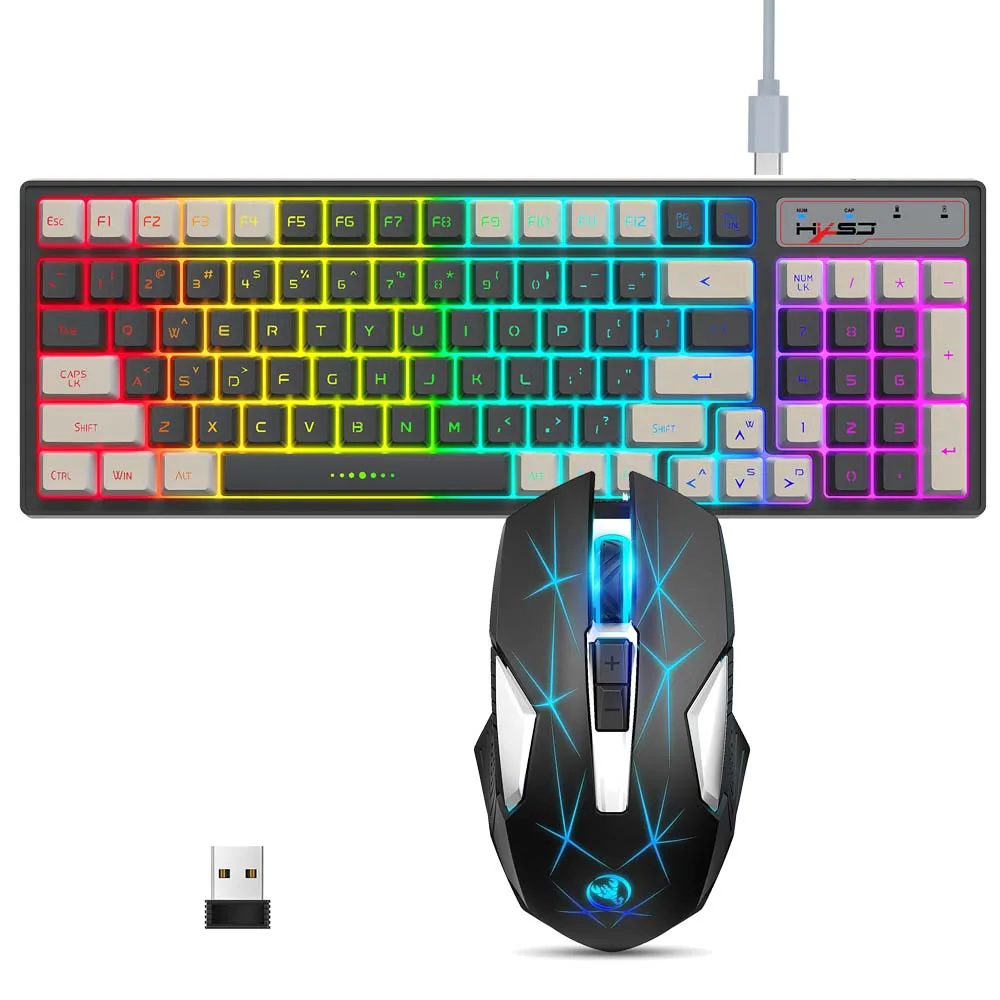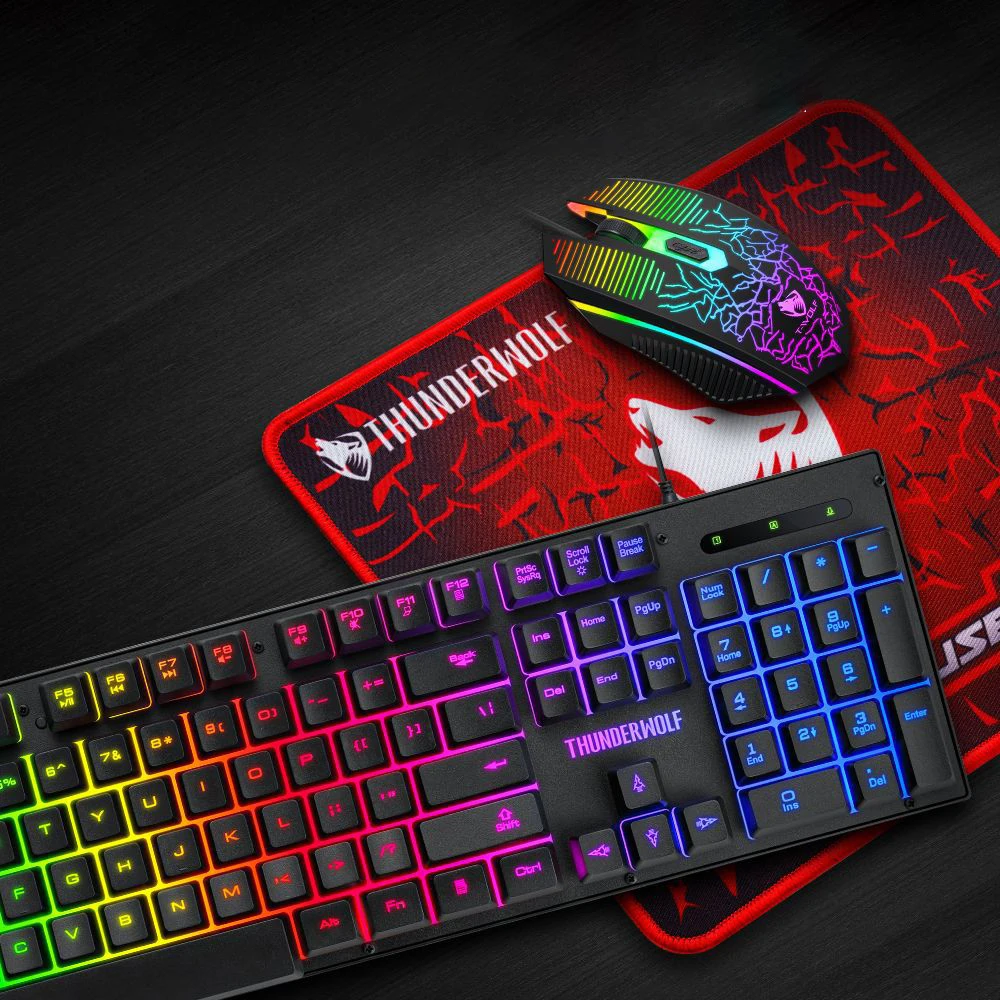In today’s digital age, having the right tools can significantly enhance your productivity and gaming experience. A popular choice among enthusiasts and professionals alike is the mechanical keyboard and mouse combination. These peripherals are not only built to last but also offer superior performance and comfort. Whether you’re a gamer, a writer, or someone who spends long hours at the computer, understanding the benefits and features of a mechanical keyboard and mouse can help you make an informed decision. This comprehensive guide will delve into the various aspects of mechanical keyboards and mice, their advantages, how to choose the right ones, and tips for maintaining them to ensure longevity and optimal performance.
 Why Choose Mechanical Keyboards and Mice?
Why Choose Mechanical Keyboards and Mice?
Mechanical keyboards and mice offer unmatched precision, durability, and customization. Unlike standard models, they use advanced mechanisms that improve typing and clicking experiences. Whether you’re gaming or working, these devices enhance productivity and performance. Let’s explore their key advantages.
Advantages of Mechanical Keyboards
Mechanical keyboards are highly durable and provide excellent tactile feedback. They use individual switches for each key, resulting in a faster and more responsive typing experience. This design reduces typing errors and improves accuracy. Different switch types, like linear, tactile, and clicky, allow users to select their preferred typing feel. These keyboards also last longer than membrane keyboards, ensuring reliable performance over years. Customizable features, such as RGB lighting and programmable keys, add to their appeal.
Benefits of Using Mechanical Mice
Mechanical mice are designed for precision and responsiveness, making them ideal for gaming and productivity. They often feature high DPI settings, allowing accurate tracking on various surfaces. This customization suits users of different preferences and tasks. Mechanical mice are ergonomically designed, reducing hand fatigue during extended use. They also include programmable buttons for added functionality, improving workflow and gameplay efficiency. With their durable build and advanced features, mechanical mice deliver consistent and superior performance for all users.
Types of Mechanical Keyboards and Switches
When choosing a mechanical keyboard, understanding its switches is essential. These switches determine the typing experience and responsiveness. Let’s delve into the three main types and popular brands available.
Linear, Tactile, and Clicky Switches Explained
Mechanical switches come in three main types: linear, tactile, and clicky. Each type suits different preferences.
- Linear Switches: These provide a smooth keystroke with no tactile feedback. They are great for fast typing and gaming.
- Tactile Switches: These have a noticeable bump in the middle of the keypress. This feedback helps accurate typing.
- Clicky Switches: These have both a tactile bump and an audible click sound. They offer satisfying keystrokes.
Choosing the right type depends on whether you prioritize quiet operation, speed, or an engaging feedback experience.
Popular Switch Brands: Cherry MX, Gateron, and Others
Several brands manufacture high-quality switches. Among them, Cherry MX and Gateron are the most recognized.
- Cherry MX: Known for durability and reliability, Cherry MX offers a wide variety of switch types. They are the industry standard.
- Gateron: Gateron switches are smoother and sometimes considered more affordable than Cherry MX alternatives. They are favored by many for customization.
- Other Brands: Brands like Kailh and Razer also provide unique switches, catering to specific needs.
Understanding the differences across switch types and brands ensures you select the perfect keyboard for your tasks.
 Key Features to Look For in Mechanical Keyboards
Key Features to Look For in Mechanical Keyboards
Choosing the right mechanical keyboard goes beyond switches and brand names. Key features like build quality, keycap materials, and additional functionalities significantly influence user experience. Let’s explore these essential aspects and what they bring to the table.
Build Quality and Materials
A mechanical keyboard’s durability depends heavily on its build quality and materials. Metal frames, such as aluminum, provide sturdiness and long-lasting performance. Plastic frames, although lighter, can be less durable. Look for keyboards with reinforced frames to withstand rigorous usage.
High-quality PCBs (printed circuit boards) and soldering also contribute to reliability. Strong, well-built keyboards feel solid and resist flexing during use. Prioritizing robust materials ensures your mechanical keyboard remains functional for years.
Keycaps: ABS vs. PBT Plastics
Keycaps, often overlooked, play a vital role in typing comfort and appearance. Two common materials are ABS and PBT plastics.
- ABS Keycaps: These are lightweight and affordable but prone to wear and shine over time. They feel smooth and might appeal to users seeking a budget-friendly option.
- PBT Keycaps: These are thicker, more durable, and resist wear better than ABS. They have a textured surface, providing better finger grip and aesthetics.
PBT is ideal for long-term use, while ABS is best for casual users seeking cost savings.
Additional Features: RGB Lighting, Hot-Swappable Switches
Modern mechanical keyboards also include extra features to enhance functionality and customization.
- RGB Lighting: Customizable RGB lighting adds a visual flair to your setup. It allows users to personalize lighting patterns and match their workspace themes.
- Hot-Swappable Switches: These enable users to change switches without soldering. This feature is perfect for those who like to experiment with different switch types.
- Programmable Keys: Custom macros or key remapping improve workflow and efficiency, especially for gamers or professionals.
By focusing on these key aspects, you can select a mechanical keyboard that matches your needs and enhances both aesthetics and functionality.
Key Features to Consider in Mechanical Mice
Mechanical mice offer valuable features that enhance precision, comfort, and usability. These features cater to different users, whether gamers or professionals. Understanding these aspects will help you choose the perfect mouse.
DPI Settings and Customizability
DPI (dots per inch) measures mouse sensitivity. Higher DPI allows faster pointer movement, while lower DPI gives better control. Many mechanical mice feature adjustable DPI settings. This flexibility lets users adapt to various tasks, like gaming or detailed graphic design. Some models even allow on-the-fly DPI adjustments with dedicated buttons. For gamers, customizable DPI ensures precision for different in-game scenarios.
Ergonomics and Grip Styles
Comfort is crucial for long hours of use. Mechanical mice come in ergonomic designs to reduce strain. Consider how you hold the mouse: palm grip, claw grip, or fingertip grip. Some mice are tailored for specific grip styles, ensuring a natural hand position. Additionally, compact mice suit smaller hands, while larger models provide more support. Ergonomics help prevent fatigue and enhance overall productivity.
Programmable Buttons and Software Support
Programmable buttons add convenience and efficiency. Mechanical mice often feature extra buttons that can be assigned various functions. These are especially useful for gamers, designers, or office workers. Custom macros can speed up repetitive tasks or improve gameplay. Many mice include software for customization, allowing personalized button mapping and profile switching. These features make your mouse adapt to your unique requirements.
 Matching Keyboards and Mice with Your Workflow or Gameplay
Matching Keyboards and Mice with Your Workflow or Gameplay
Choosing the right mechanical keyboard and mouse depends on your specific tasks and needs. Matching devices with your usage ensures better efficiency and performance. Let’s explore how to make the best choice for office work and gaming.
Office and Productivity Tasks
For office work, comfort and efficiency are key. Mechanical keyboards with tactile switches are ideal for typing-intensive jobs. The tactile feedback ensures fewer typing errors and faster input. Keyboards with silent switches, like Cherry MX Silent, are suitable for quiet environments.
Look for additional features like programmable keys to speed up repetitive tasks. Keyboards with ergonomic designs also reduce wrist and hand fatigue, offering a more comfortable experience during long hours of use.
When it comes to mice, choose an ergonomic design that supports your hand during prolonged work. Adjustable DPI settings let you adapt the mouse’s sensitivity for tasks like data entry or graphic design. Mice with programmable buttons streamline workflows by allowing you to assign shortcuts, making multitasking easier.
Gaming Performance and Preferences
For gaming, precision and responsiveness are critical. Mechanical keyboards with linear switches, like Cherry MX Red, are popular for gaming due to their rapid actuation. RGB lighting is also beneficial for immersive gaming setups. Hot-swappable keyboards let gamers customize switches to match their playstyle.
Mechanical mice with high DPI settings improve accuracy, especially for fast-paced games. Consider a mouse with on-the-fly DPI adjustments to adapt during gameplay. Additional programmable buttons are essential for assigning in-game commands or macros for quicker actions.
Ergonomics are also crucial for gaming. Palm grip gamers might prefer larger mice for support, while claw or fingertip players should look for compact options. Weighted mice are ideal for those who like added stability during gameplay.
By selecting keyboards and mice designed for your specific tasks or playstyle, you enhance both productivity and gaming experiences.
Budget Considerations and Recommended Brands
When buying a mechanical keyboard and mouse, your budget matters. There are options for every price range. Let’s explore affordable choices for beginners and premium picks for enthusiasts.
Affordable Options for Beginners
Beginner-friendly mechanical keyboards and mice are cost-effective without compromising essential features. Look for these options:
- Entry-Level Mechanical Keyboards:
- Brands like Redragon and Havit offer reliable keyboards at lower prices.
- These models often include basic features like RGB lighting and solid build quality.
- Budget Mechanical Mice:
- Affordable models like Logitech G203 or Razer Viper Mini offer precision and durability.
- Adjustable DPI settings and ergonomic designs ensure comfort during use.
These devices provide excellent value, making them ideal for those new to mechanical peripherals.
High-End Choices for Enthusiasts
For enthusiasts, premium mechanical keyboards and mice deliver advanced features and exceptional build quality.
- Premium Mechanical Keyboards:
- Brands like Corsair and Ducky offer durable designs and hot-swappable switches.
- PBT keycaps and customizable RGB lighting further enhance the user experience.
- Professional-Grade Mechanical Mice:
- High-end models like Logitech G Pro X Superlight or Razer DeathAdder V3 provide ultra-light designs.
- Features include advanced sensors, customizable buttons, and unparalleled accuracy.
While these premium options require a higher investment, they deliver exceptional performance and longevity.
By considering your budget, you can find the perfect mechanical peripherals to suit your needs.
 Maintenance Tips for Long-Lasting Performance
Maintenance Tips for Long-Lasting Performance
Proper maintenance ensures your mechanical keyboard and mouse stay functional for years. Regular cleaning and occasional upgrades not only prolong their life but also maintain their optimal performance. Let’s explore essential care tips.
Cleaning Mechanical Keyboards and Mice
Dirt and debris can affect performance over time. Regular cleaning keeps devices smooth and responsive.
- Remove Dust and Debris:
- Use a soft brush or compressed air to clean between keys.
- For mice, clean the sensor and exterior with a microfiber cloth.
- Deep Cleaning Keyboards:
- Detach keycaps and soak them in soapy water. Avoid harsh chemicals.
- Wipe the keyboard frame gently using a damp cloth. Ensure no moisture enters the switches.
- Cleaning Mechanical Mice:
- Use alcohol wipes to clean the surface.
- Inspect buttons and scroll wheels for dirt build-up. Remove it carefully.
- Frequency of Cleaning:
- Light cleaning should be done weekly. Deep cleaning is recommended every few months.
Switch Replacement and Upgrades
Switches wear out over time but can be easily replaced or upgraded to enhance performance.
- Identifying Faulty Switches:
- Check for unresponsive keys or inconsistent clicks.
- Test switches if issues persist after cleaning.
- Switch Replacement:
- Use a switch puller tool with hot-swappable keyboards to replace without soldering.
- For non-hot-swappable keyboards, soldering knowledge is required.
- Upgrading Switches:
- Try different switch types to suit personal preference (e.g., tactile, linear, or clicky).
- Upgrading gives a new typing feel without replacing the entire keyboard.
- Lubrication for Smooth Performance:
- Apply switch lubricant to reduce noise and improve keypress smoothness.
Taking care of mechanical keyboards and mice doesn’t have to be complicated. With these simple tips, you can extend their lifespan and keep them in excellent working condition.
The Future of Mechanical Keyboards and Mice
As technology continues to evolve, so do the designs and functionalities of mechanical keyboards and mice. Here’s a glimpse into what the future holds for these essential peripherals.
Advancements in Switch Technology
Future mechanical keyboards will likely see further innovations in switch technology, offering even more customization options and improved tactile feedback. Developers are working on creating quieter switches without compromising the tactile experience, catering to various user preferences and environments.
Enhanced Customization Software
Software for mechanical keyboards and mice will become more sophisticated, allowing users to create intricate macros, lighting patterns, and performance profiles. Integration with other smart devices and platforms will provide a more seamless and interconnected user experience.
Wireless Technology Improvements
Wireless mechanical keyboards and mice will continue to improve in terms of connectivity, battery life, and latency. Future models may offer ultra-fast wireless connections that rival wired performance, making them even more appealing for gamers and professionals who require high precision and responsiveness.
Sustainable and Eco-Friendly Designs
With increasing awareness of environmental impact, manufacturers are focusing on creating more sustainable and eco-friendly mechanical peripherals. This includes using recycled materials, designing modular components for easier repairs, and implementing energy-efficient technologies to reduce environmental footprints.
 Conclusion
Conclusion
Integrating a mechanical keyboard and mouse into your computing setup can transform your experience, offering unparalleled performance, durability, and customization. Whether you’re a gamer seeking precision, a professional aiming for efficiency, or someone who appreciates the tactile satisfaction of mechanical switches, this combination meets a wide range of needs. By understanding the benefits, choosing the right peripherals, and maintaining them properly, you can enjoy a superior computing environment that enhances both productivity and enjoyment. Embrace the advantages of mechanical keyboards and mice, and elevate your workspace to new heights of functionality and style.